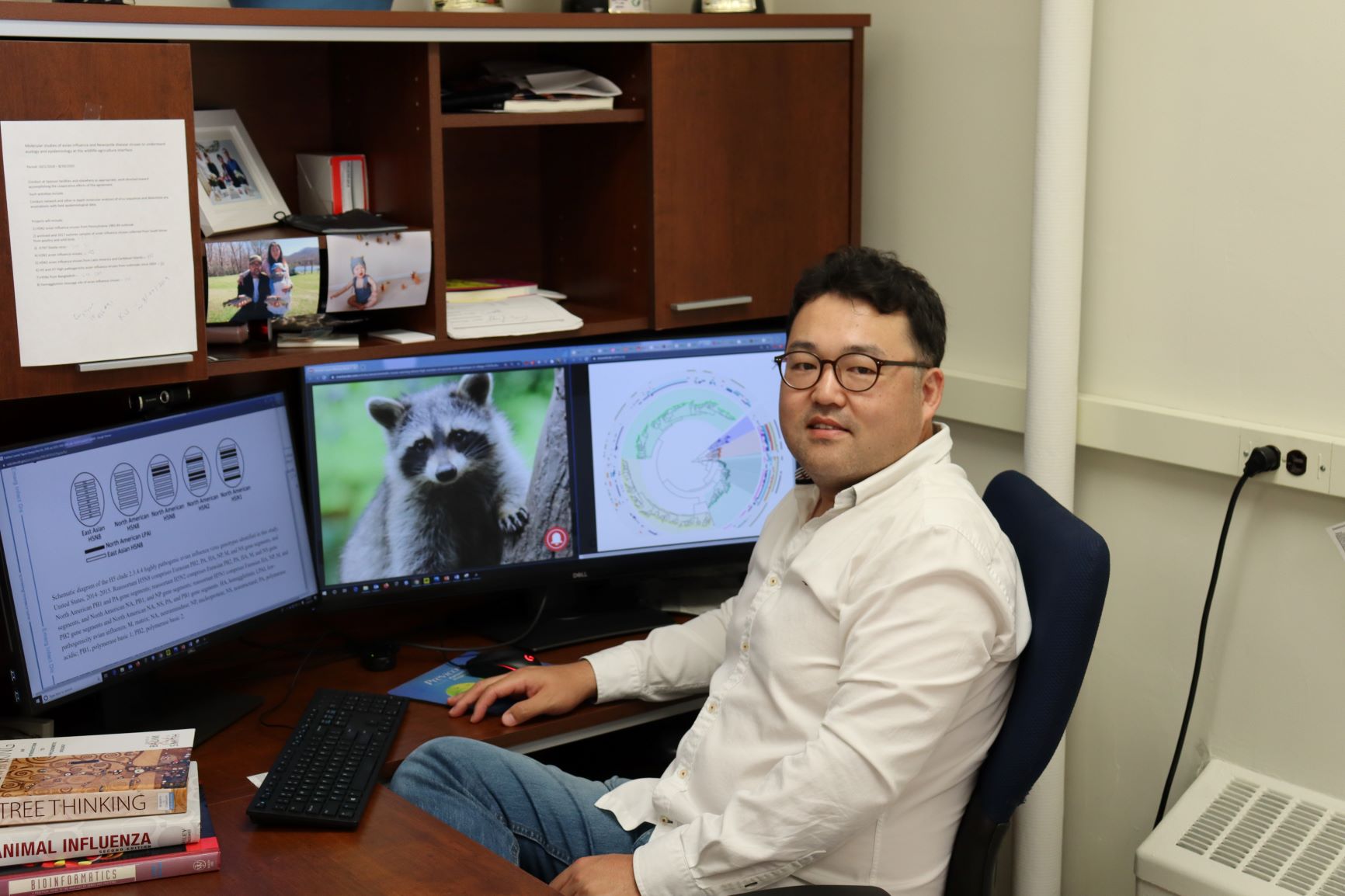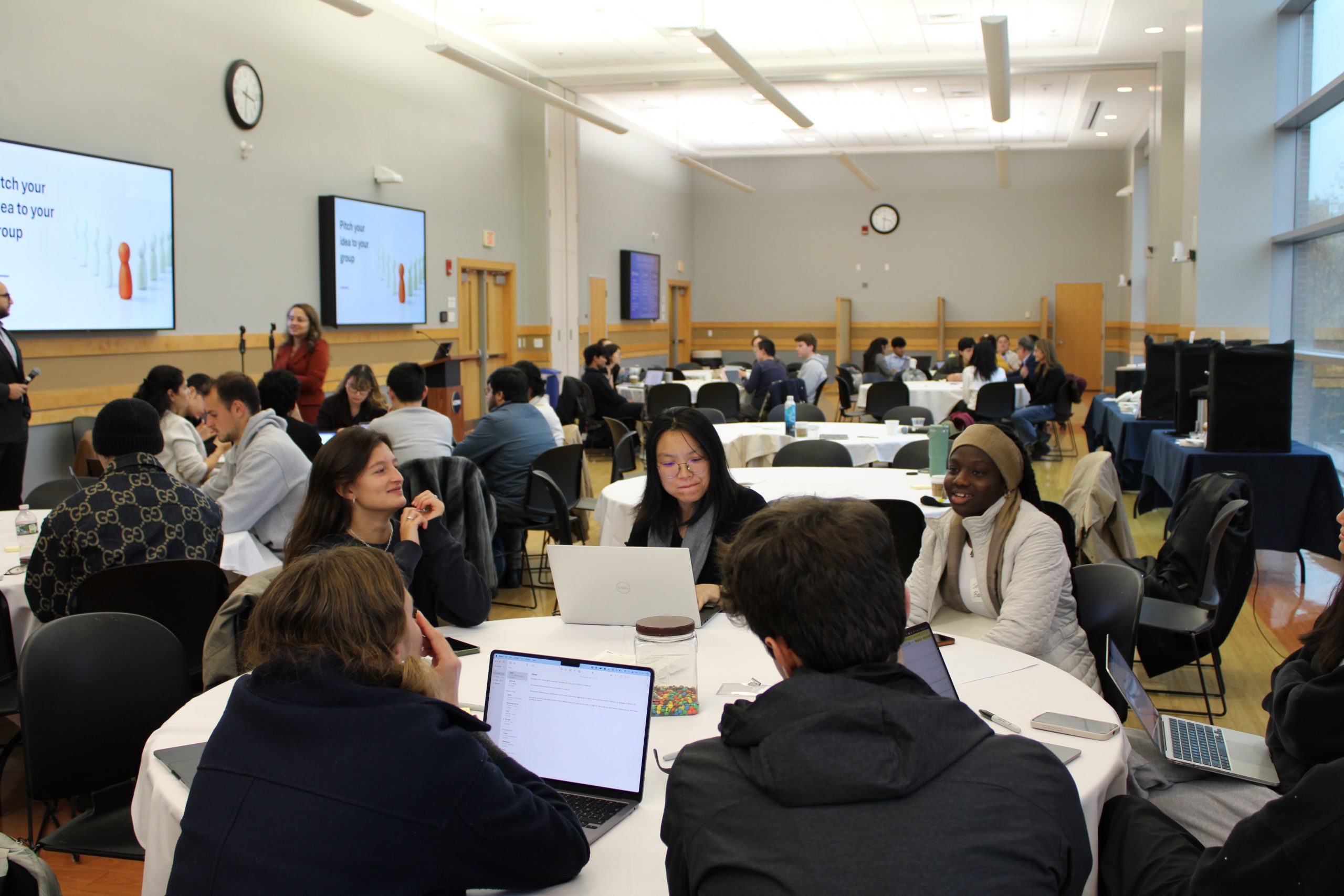Avian influenza (AI) affects both the poultry industry and public health, as it can cross species and infect livestock, pets, marine mammals and humans. Dong-Hun Lee, assistant professor in the College of Agriculture, Health and Natural Resources’ Department of Pathobiology, has studied this virus for the past thirteen years, using genome sequencing and comparative phylogenetic analysis to examine evolutionary changes that highlight the role of wild birds in the spread of these viruses.
“Migratory birds play important roles in the geographic spread of avian influenza virus,” says Lee. “Migratory wild birds, particularly those belonging to the orders Anseriformes (such as ducks, geese and swans) have long been recognized as natural hosts and reservoirs for avian influenza viruses.” Lee says that as long-distance seasonal migrants, these birds serve as perfects hosts for AI. The viruses have been isolated in more than one hundred bird species, with global distribution of AI in free-living waterfowl populations.
He continues, “The birds encounter migratory birds from other flyways and aggregate in large numbers at stopover sites during migration, which can facilitate infections as the virus can be more rapidly transmitted between individuals that occur in high density. This explains why this virus disperses over long distances so fast.”
The H5Nx highly pathogenic avian influenza (HPAI) virus emerged in 1996 in Guangdong, China, and has since caused outbreaks in poultry, infections in wild birds and often fatal clinical cases in humans in more than eighty countries. HPAI emerged in North America in 2014, affecting more than 50 million poultry birds in the United States before it was eradicated in June 2015, at a cost of $850 million to the US government, and an estimated $700 million to $1 billion for poultry industries.
Lee explains, “To better understand the emergence and transmission history of this outbreak, we investigated the underlying ecologic and epidemiologic processes associated with this viral spread by performing a comparative genomic study using virus genome sequences and data from outbreak investigations.
Lee says that the data showed that the HPAI virus was introduced into North America through Alaska via intercontinental movement of migratory waterfowl and circulated in wild birds along the Pacific flyway before several spillover events transmitted the virus to poultry farms. Subsequently, multiple virus introductions into Midwestern states occurred during the spring of 2015. Once established in poultry farms in the Midwest, the virus rapidly spread between turkey and chicken farms in neighboring states. This was the largest and most expensive avian influenza outbreak in the United States, with an economic impact of $3.3 billion.
To further understand and trace these global viral transmissions, Lee is involved in several international collaborations with universities and government researchers in Bangladesh, Cambodia, Canada, Dominican Republic, Iran, Jordan, Korea, Laos, Mexico, Mongolia, Pakistan, Russia, Taiwan, the United Kingdom and Tunisia. These studies are supported through the USDA, UConn and the Konkuk University Industrial Corporation Foundation of South Korea.
In his research, Lee uses interdisciplinary combinations of genome sequencing and computational biology tools to rapidly identify unknown or unexpected pathogens, allowing his team to identify the origins of an outbreak and track patterns of disease transmission.
“Recent advances in molecular biology and bioinformatics allow complete genome sequencing of pathogens that can provide accurate genetic information, leading to a better understanding of the epidemiological landscape of infectious diseases, transforming how laboratories diagnose and further characterize the pathogens,” Lee says. “Much of this information would either remain unknown or take a very long time to reveal using traditional microbiology and epidemiology.”
In a new project, Lee is working on developing rapid, low-cost, automated whole-genome sequencing for emerging pathogens. This technique would provide information about similar viruses, patterns of spread and adaptation to new hosts, including animal to human spread, and provide strategies for diagnosis, prevention and control of diseases.
He says that high-throughput genome sequencing is driving dramatic progress in many fields of infectious disease research. Although genome sequencing can be used to answer a multitude of questions on emerging infectious diseases, Lee says that the complexity of workflows and interpretation of results and the high costs of instrumentation for DNA library preparation and sequencing of whole genomes and of the computational power required for data processing, transfer, storage and analysis have been barriers to building an affordable sequencing environment.
“For practical use in clinical or diagnostic laboratories, says Lee, “my lab is working on an automated pathogen sequencing pipeline using a bench-top liquid handler robot, small-scale genome sequencing platforms and a laptop computer.” The goal is to develop an easier-to-use, less expensive way for smaller laboratories to produce accurate and complete genome sequences of emerging infectious diseases in a timely manner. The process would provide pathogen identification, virulence information, drug resistance profiling and epidemiological data.
In addition to his work on avian influenza viruses, Lee has begun collaborative research with the Connecticut Veterinary Medical Diagnostic Laboratory on local infectious diseases in wildlife and livestock, including rabies, Lyme disease and Salmonella.
The AI studies described in this articles have been supported USDA US Government Interagency Agreement #60-6040-6-005 and the Konkuk University Industrial Corporation Foundation, South Korea, grant #NRF-2018M3A9H4056535. The automated genome sequencing study has been supported by UConn Research Excellence Program and the US Poultry & Egg Association Research Grant Program project #F088.



